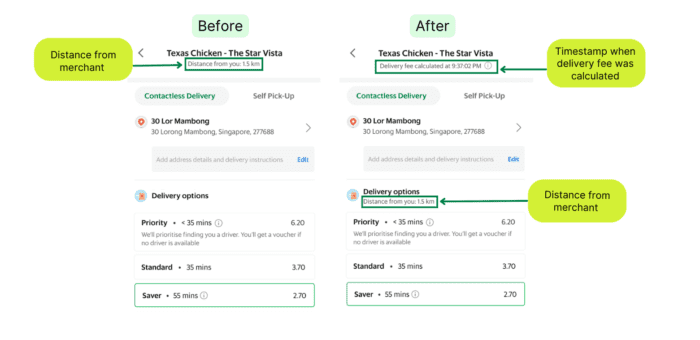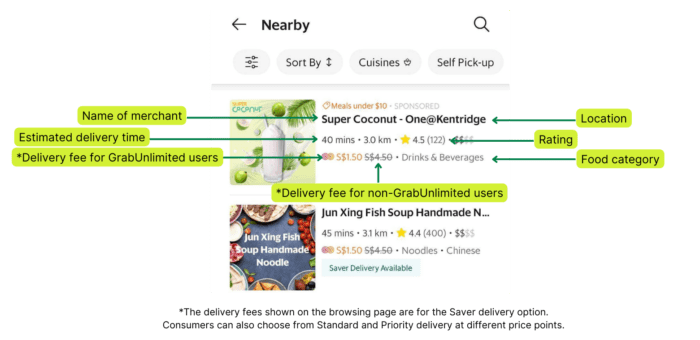The Grab app will now show when each user’s delivery fee is set
GrabFood and Dispatch
Users ordering food on the latest version of the Grab app will start seeing a timestamp indicating when their delivery fee was set.
Each person’s delivery fee is dynamic, determined by Grab’s live marketplace that is constantly influenced by the real world. The price it settles on is balanced against real-time demand, supply of driver-partners in the vicinity, and other elements that change live like weather conditions and traffic on the roads.
(Read more: Grab’s dynamic pricing explained)
Our platform calculates all these factors and arrives at a delivery fee that is aimed at ensuring reliability for the marketplace. With these constantly changing factors, the delivery fee can change by the second.
In user testing, we found that the delivery fee is a big contributor to the eater’s decision on which restaurant to pick. If the fee were to fluctuate as people browsed, it would make the GrabFood experience jarring and stressful.
So once users tap on the Food tile to begin browsing restaurants and menus, the app will set and hold the delivery fee for a period of time. This is called caching.

Once they’ve selected their dishes and come to the checkout page, the app now shows upfront the exact time when the delivery fee was calculated.
While the app holds the fee for a period of time that most users typically take to browse and order, some users might take a longer time before checkout. In those cases, they might see a different fee amount when the marketplace refreshes a different price for them.
The new timestamp is aimed at providing users with the clarity on when their delivery fee was calculated.

Users make multiple decisions as they browse for food
When a person browses food options on a delivery app, they’re not just deciding what to eat. Often, they’re simultaneously taking in and considering multiple types of information at the same time.
Besides looking at the dish, there’s a host of peripheral details adding to the noise—is the restaurant near me; will I have to wait longer; does the merchant have a high rating; is it expensive; what’s the delivery fee?

This processing is done nearly subconsciously for most, and we’ve learned that users demand all of this information at the browsing page, so that they can make decisions quickly without needing to tap in and out of individual merchants unnecessarily.
And while most of the information is fairly static—your proximity to the merchant isn’t going to change, and review ratings won’t fluctuate wildly—the delivery fee is a lot more “live” than any of the other factors.
In our research, we found that users needed to trust that delivery fees they see will remain constant while they’re choosing what to eat.
We hope the new timestamp update will help make the app clearer and more user-friendly for every eater.
3 Media Close,
Singapore 138498